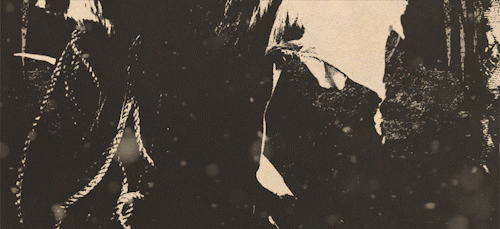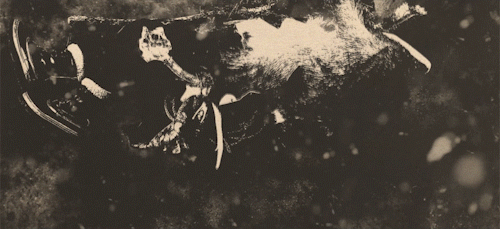THE ASCENSIONIST
The path begins again.
The Ascensionist is the eighth canonical RANGES release and the first to debut on 12" vinyl. With it came an intentional turning point—both a return and a redefinition.
It marks a delineation between what came before and what would follow: a way to connect back to the band’s original essence while establishing the structure for what lay ahead.
At its core is the Mountain—a singular symbol chosen to represent the journey of ascent. This motif expands beyond the literal into metaphor, exploring the process of rising through sound, intention, and will.
Though the seven previous albums had already suggested a loose narrative arc, The Ascensionist reorders and reframes them under a newly defined structure. The album itself becomes the lens through which the past is reinterpreted and the future is forecast.
The title track serves as a holographic fractal—its internal structure mirroring the full album—and the accompanying music video offers further symbolic clues to its layered design.
With the original pressing of 250 vinyl copies, a hand-made booklet was included. Presented as a kind of ritual journal, it traced the Ascensionist’s progress through the seven prior albums, each represented by a distinct symbol. This symbolic system would later return in the Path of the Ascensionist cassette series.
The full music video for The Ascensionist appears below, followed by an analysis of each track and the stage of ascent it represents.
THE WANDERER
The journey begins in descent.
The process of ascent is, paradoxically, the process of return.
To rise, one must first fall.
The one who has fallen crawls through the mire—seeking footing, but still without sight. He becomes the Wanderer: cast into wilderness, blind to purpose or direction. No clarity. No compass. Only inertia and the weight of unformed matter.
This is gross matter incarnate. The state before intention. Before refinement.
AB SA RO KA—a guttural mantra of dissonance. Four syllables that approximate language but signify nothing. A profane utterance, scattered across the checkerboard.
It is not yet meaning.
It is only the beginning.
SEVEN SISTERS
The heavens open for a moment.
The veil lifts, and the heavens momentarily reveal themselves—
a fleeting vision of something beyond the temporal, radiant and out of reach.
The daughters of Atlas rise upon the shoulder of the bull—
the Pleiades, calling like sirens to any who still possess ears to hear.
This is the call upward.
A whisper of what lies beyond.
But ascent requires presence, not just vision.
The mansions of the firmament must be dwelt within to be understood.
Passing through is not enough.
The son begins his movement with twelve disciples.
Each step mirrors the sky.
THE ASCENSIONIST
The will to ascend must be chosen.
From formless wandering comes the first act of creation: choice.
Volition is the moment when ascent becomes possible— a tripartite union of forces aligning into purpose.
Thought, brought into right alignment with Emotion, gives birth to a new force.
The result is the Blade—the first tool, the first weapon, the first clarity.
This is not the ascent itself.
It is the consent to ascend.
No one rises by accident.
The mountain does not lift you.
You must choose to climb.
CALLED NOT TO A NEW RELIGION, BUT TO LIFE
The first vow is silence.
The aspirant lays himself bare.
He casts off all attachments—material and ideological alike.
No creeds. No idols. No systems to cling to.
Only a single act of surrender: a declaration of internal poverty.
This is not a conversion.
It is not the adoption of a new belief.
It is a call to life—unfiltered, untethered, unguarded.
And so the vow is taken:
Not to speak is to speak.
Not to act is to act.
The silence itself becomes a blade.
And what is not said clears the path.
THE GREATER LIGHTS
Revelation through duality.
The fog lifts. The miasma of the wilderness recedes, and for the first time, the two pillars are seen—polar aspects standing guard at the threshold.
Light and darkness.
Masculine and feminine.
Ascent and descent.
The dualistic dynamics that govern all manifested things.
These are not obstacles.
They are revelations.
The Hermetic Axioms, seven in number, become illuminated.
They do not create the pillars—They reveal what has always been there.
As the crux of the lowest octave in the grand cosmology,
this is the moment when Day must be separated from Night.
The opposites must be seen clearly so they can be brought into balance.
THE LESSER LIGHTS
The path narrows in shadow.
As the sun rules the day, so must the moon govern the night.
With the pillars now revealed, the trials begin.
The path forward twists into circles—
endless cycles of seeking, forgetting, remembering, and seeking again.
By day, the path seems visible.
By night, it must be divined.
Each step becomes a question.
Each cycle, a test.
The aspirant searches for a single luminary—
a solitary light that might contain the answer.
But no such light exists.
There is no shortcut.
No bypass.
The only true way out is through.
SEVEN VEILS
The trial of death begins.
The climb grows perilous.
Antagonism sharpens. Shadows close in.
On the very steps of the altar, the serpent appears—
not with force, but with seduction.
The deceiver tempts most cunningly where the sacred resides.
An alluring dance veils the truth, each movement a lie, each layer a trap.
To follow is to fall.
The silver cord is loosed.
The wheel is broken at the cistern.
The essence of the chalice is spilled.
There is no going back.
This is not symbolic death—this is the trial itself.
All that was carried must now be surrendered.
Only what remains can ascend.
IN THE ARMS OF KINGS AND GODS
The ascended awakens in structure.
The trial has passed. Death has been faced.
What remains now stands upon a plane foreign to most faculties of perception.
There, the one who ascended beholds a tree—
a structure of order, revelation, and divine symmetry.
The brazen serpent, no longer deceiver, now offers redemption—
absolution from the weight of death.
It coils not to constrict, but to elevate.
The path is made visible.
What once seemed chaos now resolves into hierarchy—
grades of ascent ascending the Sephirot,
from the root of Kingdom
to the Crown of ultimate fulfillment: Kether.
This is not the end.
But it is the moment when the map is revealed.
BABYLON THE GREAT (PART I)
The work is finished. The choice remains.
Attainment is complete.
The ascent has succeeded. The matter has been made light.
The leaden cube—dense, inert, bound to earth—
has been transmuted. What was heavy now radiates.
But at the summit, a question remains.
The resplendent realm of Metatron beckons with permanence.
But so too does the voice of Babylon,
calling not with temptation, but with need.
To remain above is bliss.
To return below is sacrifice.
The Bodhisattva chooses to descend—
not in defeat, but in compassion.
As the masters say:
As above, so below.
The cycle begins again.
























































